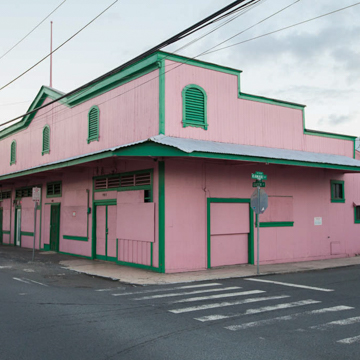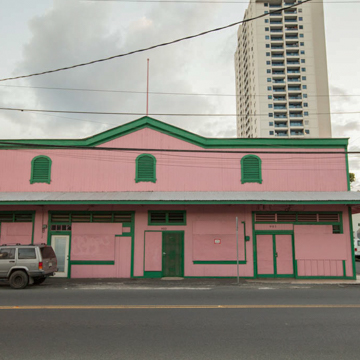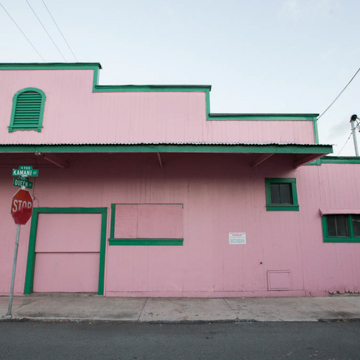Blazing pink with bright green trim, the K. T. Ching store is a fine example of a vernacular, frame commercial building of the early twentieth century. With its imposing false front, ornamented with round-arched vents, rising above the sheltering corrugated-iron awning, the building is a commanding presence at the corner of Queen and Kamani streets. Constructed of six-inch tongue-and-groove, the four storefronts retain the transom-level ventilation slats above the shop windows. The corner unit's vertically sliding doors take advantage of Hawaii's semitropical climate to open up the interior. This door form was one of several vernacular solutions used to encourage easy access and enhanced ventilation in small commercial stores. Alternate forms commonly found in Honolulu include folding doors, sliding doors, and removable panels.
You are here
K. T. Ching Store
If SAH Archipedia has been useful to you, please consider supporting it.
SAH Archipedia tells the story of the United States through its buildings, landscapes, and cities. This freely available resource empowers the public with authoritative knowledge that deepens their understanding and appreciation of the built environment. But the Society of Architectural Historians, which created SAH Archipedia with University of Virginia Press, needs your support to maintain the high-caliber research, writing, photography, cartography, editing, design, and programming that make SAH Archipedia a trusted online resource available to all who value the history of place, heritage tourism, and learning.












